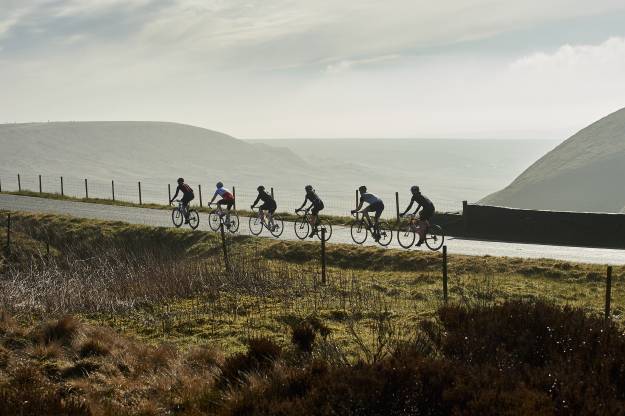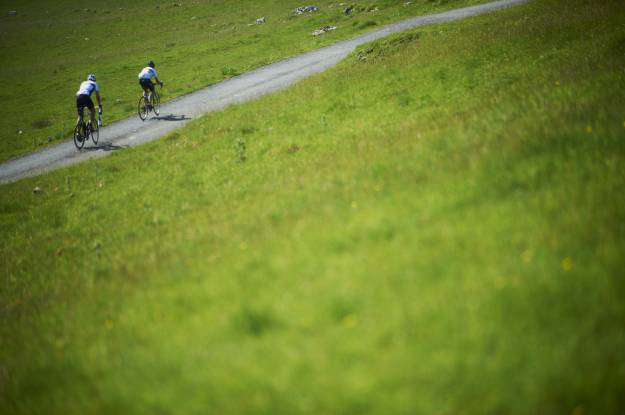 Don't let fear of bike crime put you off riding your bike!
Don't let fear of bike crime put you off riding your bike!
Cycling is a quick, convenient and fun way to make short local trips. However it quickly becomes a slow, expensive and rage inducing choice if you aren't careful locking your bike at either end of the trip.
There are several steps you can take to secure your bike and minimise the risk of it being stolen or damaged by an attempted theft:
- Choose the bike appropriate for the job
- Bolt on anything that can be bolted on
- Choose the correct lock
- Choose your parking space carefully
We'll look at each of these in turn to help you lock your bike confidently, knowing it should be there next time you need it.
Choose the bike appropriate for the job
If you will rarely or never leave a bike in the street out of your sight by all means ride as flash a bike as you want. However, if you plan to leave it locked in the street, in a car park or un attended on trains when commuting you may wish to consider a cheap inconspicuous bike for everyday use. Bikes with relatively plain paint schemes, mudguards, pannier racks and no suspension tend to all be safe bets for leaving locked out of sight.
As a general rule of thumb mountain bikes, expensive road bikes and increasingly, single speed town bikes are top of the target list.
Bolt on anything that can be bolted on

Quick releases are great for racing, but most people can spare the time to unbolt an Allen key or security key to remove seats and wheels. There are 2 main options for securing easily removed bits such as wheels and seats:
Allen Key Skewers- these replace quick releases and are adjusted with an Allen key.
Security Key Skewers (like these Pitlock ones, right)- these use a specific security key and are therefore more secure than Allen keys, but you need to keep the key on your key ring at all times.
A good rule of thumb for bikes that will be locked un attended for any length of time is if you didn't attach a component with at least 2 separate tools, take it off and take it with you!
Choose the correct lock

Locks sold in the UK are rated by Sold Secure, a home office and police supported body, from Bronze to Gold to ensure that you know how tough you can expect a lock to be. If you want to see some locks being destroyed in the name of research take a look on youtube and search for 'bike lock test'.
Each lock or other security device is graded into one of three categories:
Bronze - Useful for very short trips into shops or where the bike will be within view but not within reach.
Silver - These are intended to provide reasonable security for most on street situations where hopefully a passer by would intervene within the 3 minutes it takes to destroy the locks.
Gold - These products will withstand a thief for up to 5 minutes with all conceivable tools, during which time it is hoped they would either be put off and leave, or be disturbed.
As gold standard locks are expensive and generally quite heavy you may want to only use one for long term parking such as at work and at home. Consider leaving one at regular destinations to save ending up draped in cables and chains, looking like John Rambo and weighing double your normal weight.
Note- you can realistically only get 3 bikes in a double bed and still sleep comfortably. Any more than this and you need to get bunk beds or a shed.
Choose your parking space carefully

The best choice is always a purpose built bike stand or rack, in a busy overlooked area, close to your destination, lit at night and covered by CCTV. Some good rules to follow are
- Don't lock your bike so it blocks the pavement- it's not fair on people with push chairs and disabled people, particularly those who are visually impaired and struggle to see the shape of bikes against a mixed background
- Don't lock it to railings when there are signs saying NO BIKE PARKING. There's a good chance it either won't be there when you get back, or a security guard will have accidentally 'tripped over it'
- Lock the bike where it will be overlooked by a reception, shop window or other busy area
- Lock to something with both ends attached to the ground or a wall. Street signs with nothing on top are no good as a thief can simply lift your locked bike over the top of the signpost
- Look for somewhere where your bike has some weather protection, and if not consider having a plastic bag to cover your seat to keep the rain off.
Now you've worked out the best way to lock your bike in the street it time to work out how to lock your bike at home (tell me you do lock your bike at home?). 48% of all bikes reported stolen are taken from sheds and garages (Transport Research Laboratory), either as part of a targeted attack or a more general break in. When compared to just 14% in shopping areas you can see that security at home is a big consideration.
Your aim when locking bikes at home is to make them difficult enough to deter thieves. Options include locking several bikes together, locking to something immovable or installing an anchor point to lock to.
Anchor points can be attached to the wall or floor using a home drill and screw driver. Prices start from £40 upwards, but can be used to lock several bikes to and could save all the bikes in your garage. Having tested one by trying to rip it out of the garage with a 4x4, they certainly work if installed well!









